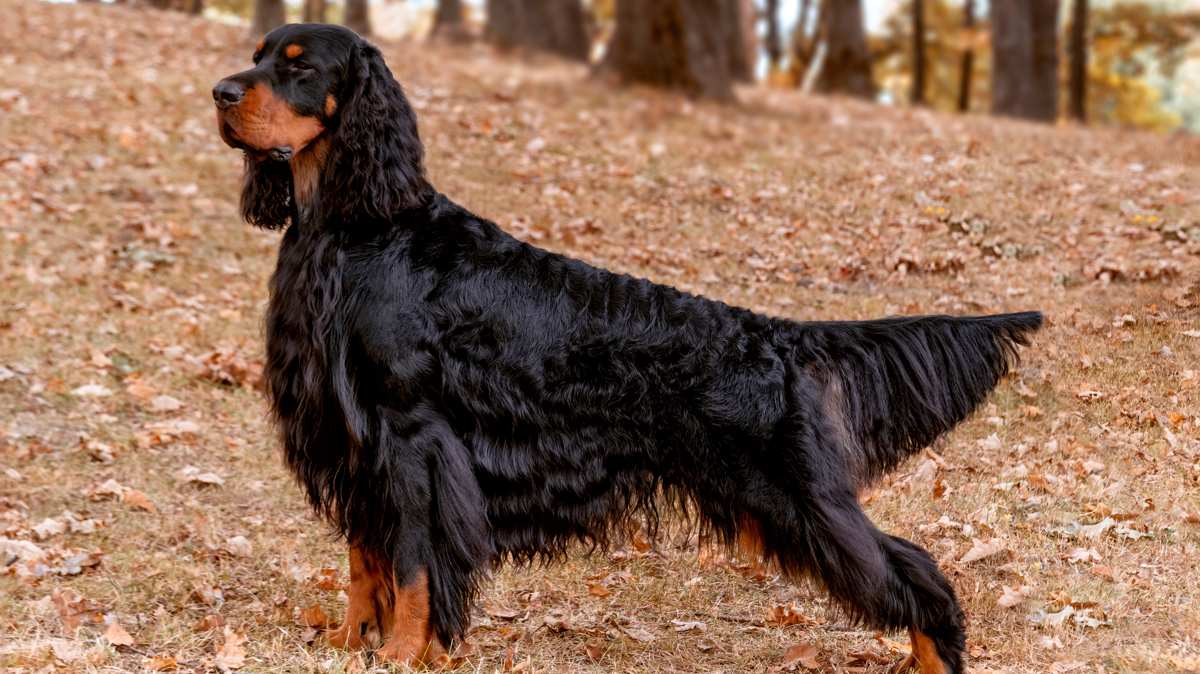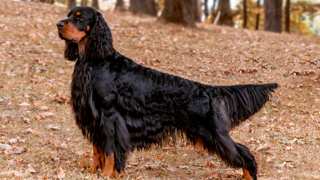This dog has been around for several centuries. Gordon Setter history had its start in Scotland in the early 17th century, around 1620. Originally called "black and tan setting dogs," they were later developed by the Duke of Gordon in the late 18th century. The Duke's black and tans were produced by crossing black and tan-coated Collies with setters. There were other kennels developing the breed, too, and they used bloodhounds and pointers, but the Duke called his the "Gordon Castle Setter."
The setters of the kennels at Castle Gordon were widely known for their superior setting skills and as excellent hunting dogs in general. These skills, along with their appearance, later made them highly popular at dog shows too. In 1827, the Duke died, and the kennels were thereafter seen, to great success, by his heir, the Duke of Richmond.
In the third quarter of the 19th century, the Kennel Club (KC) of England entered no fewer than 126 of these setters into its first stud book. The first black and tan setter to be listed was in June 1859, when the first KC dog show was held. Dandie was the dog's name, and he took first prize among all setters. Dandie's bloodline was established at the Castle Gordon kennels.
In 1842, the first black and tan setters were exported to America. Daniel Webster (of dictionary fame) and George Blunt purchased two dogs, Rachel and Rake. These dogs provided foundation stock in the USA. In 1891, a man named Harry Malcolm wrote the Gordon's first breed standard. By 1892, the American Kennel Club formally recognized the breed. It took three more decades before the breed's name was officially shortened to "Gordon Setter" in 1924. That same year, Malcolm established the Gordon Setter Club of America, Inc., an entity which remains today with and which boasts more than 1,000 members.

